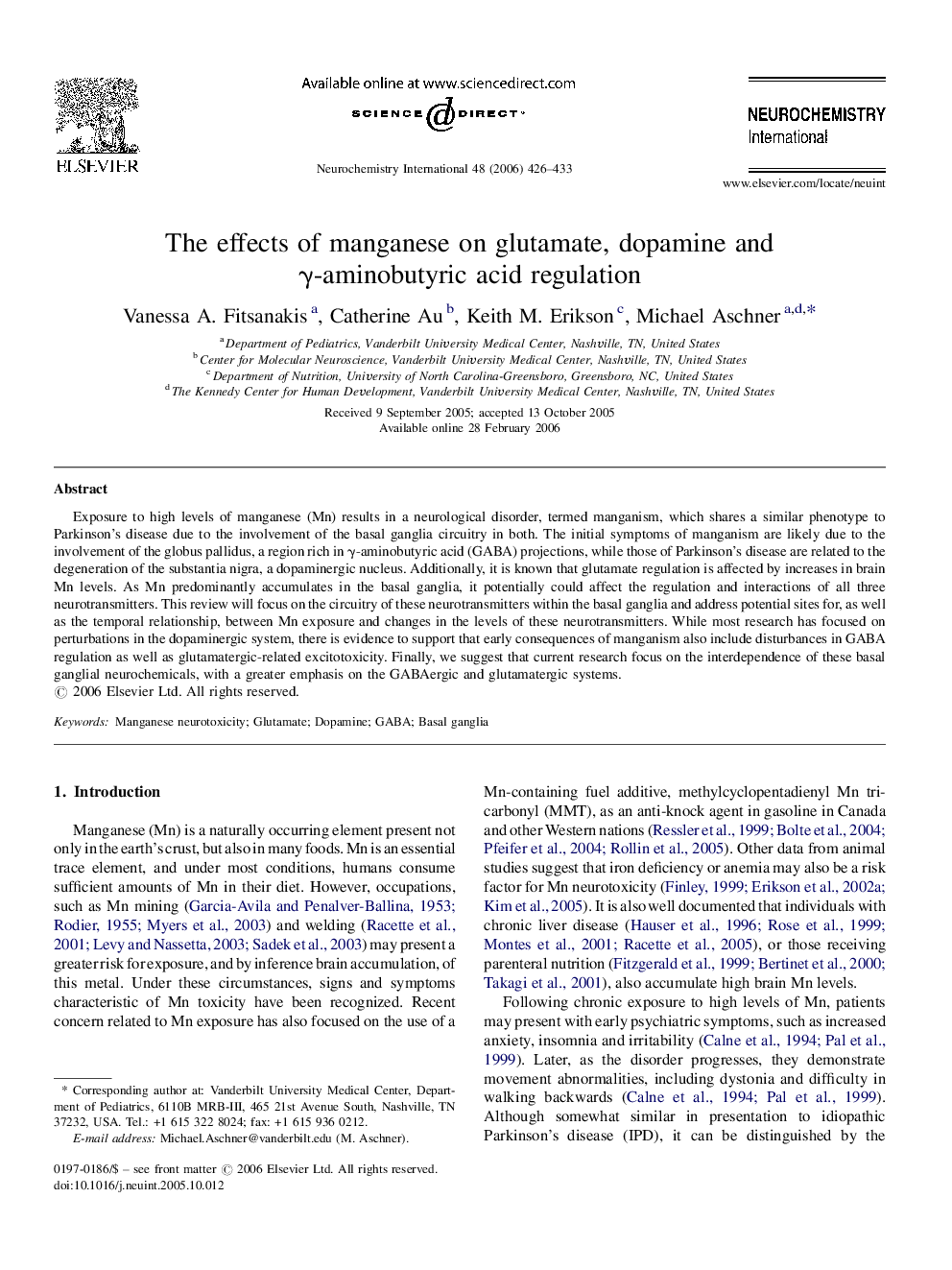| Article ID | Journal | Published Year | Pages | File Type |
|---|---|---|---|---|
| 2202186 | Neurochemistry International | 2006 | 8 Pages |
Exposure to high levels of manganese (Mn) results in a neurological disorder, termed manganism, which shares a similar phenotype to Parkinson's disease due to the involvement of the basal ganglia circuitry in both. The initial symptoms of manganism are likely due to the involvement of the globus pallidus, a region rich in γ-aminobutyric acid (GABA) projections, while those of Parkinson's disease are related to the degeneration of the substantia nigra, a dopaminergic nucleus. Additionally, it is known that glutamate regulation is affected by increases in brain Mn levels. As Mn predominantly accumulates in the basal ganglia, it potentially could affect the regulation and interactions of all three neurotransmitters. This review will focus on the circuitry of these neurotransmitters within the basal ganglia and address potential sites for, as well as the temporal relationship, between Mn exposure and changes in the levels of these neurotransmitters. While most research has focused on perturbations in the dopaminergic system, there is evidence to support that early consequences of manganism also include disturbances in GABA regulation as well as glutamatergic-related excitotoxicity. Finally, we suggest that current research focus on the interdependence of these basal ganglial neurochemicals, with a greater emphasis on the GABAergic and glutamatergic systems.
